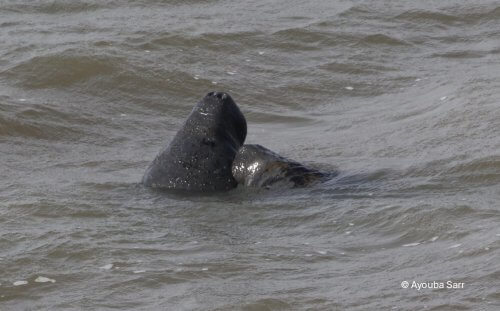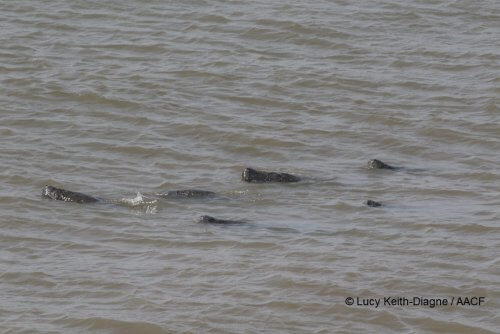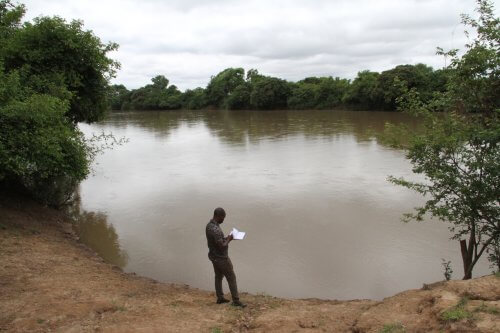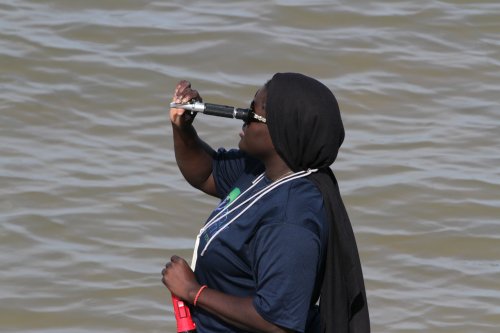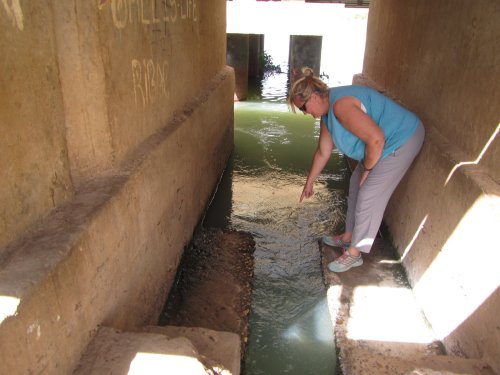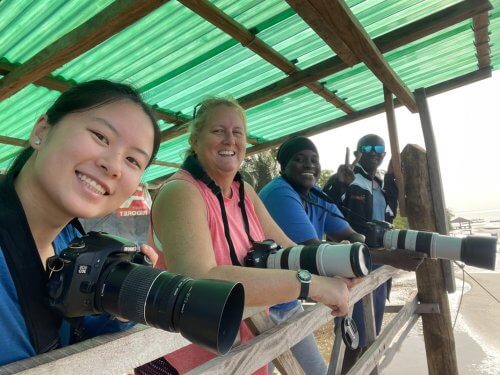Déscription du Programme
Le lamantin Africain est l’espèce de lamantin la plus menacée et la moins étudiée au monde. Il vit dans les lagons des forêts tropicales équatoriales, dans les rivières en bordure du désert du Sahara, autour des îles côtières de l’océan Atlantique et dans de nombreux autres habitats de 21 pays le long de la côte atlantique africaine, ainsi qu’à plus de 3 000 kilomètres à l’intérieur des terres, dans les rivières de Guinée, du Mali et du Tchad. Malgré les lois existantes dans chaque pays pour les protéger, les principales menaces qui pèsent sur les lamantins africains sont le braconnage, les captures accidentelles dans les pêcheries (prises accessoires) et d’autres menaces d’origine humaine, telles que le piégeage derrière les barrages et la destruction de leur habitat.
Basée au Sénégal, le Dr Lucy Keith-Diagne étudie le lamantin africain depuis plus de 20 ans, dans le but d’approfondir les connaissances sur l’espèce afin de contribuer à sa protection et à sa conservation. Lucy travaille avec des collaborateurs et des étudiants Africains dans plus de treize pays pour développer et pérenniser des études et des projets de conservation.
Les composantes spécifiques de la recherche comprennent :
- Études de la répartition et de l’habitat afin d’identifier et de protéger les zones importantes pour les lamantins.
- Évaluations des menaces pour identifier, quantifier et réduire les menaces telles que la chasse illégale, les prises accessoires, le piégeage par les barrages et la destruction des habitats.
- Sauvetage de lamantins blessés, orphelins, piégés ou capturés illégalement.
- Necropsies de lamantins morts afin de déterminer la cause du décès et de collecter des échantillons pour mieux comprendre la physiologie et la santé du lamantin Africain.
- Génétique des populations : première étude à l’échelle de l’aire de répartition du lamantin Africain visant à identifier les différentes populations, à estimer les effectifs et à déterminer la diversité et les liens de parenté des différentes populations de lamantins en Afrique. Cela nous aidera à identifier les populations en difficulté et celles qui se portent bien.
- Écologie alimentaire : identification des types de ressources alimentaires consommées par les lamantins dans les nombreux écosystèmes variés où ils vivent, ce qui sera très utile aux gestionnaires pour savoir quels types d’habitats protéger. Contrairement à toutes les autres espèces de lamantins, il a été démontré que les lamantins Africains consomment des poissons et des mollusques (palourdes et moules), en plus des plantes.
- Longévité : première analyse de détermination de l’âge des lamantins Africains à partir d’os d’oreilles prélevés sur des carcasses. Cette technique est utilisée depuis de nombreuses années pour les lamantins de Floride, mais c’est la première fois qu’une telle analyse est réalisée pour les lamantins africains. Connaître la durée de vie des lamantins nous permet de mieux comprendre le cycle biologique de ces créatures énigmatiques.
Les résultats de nos analyses, issues des informations biologiques que nous recueillons, nous aident à mieux comprendre le cycle biologique des lamantins de plusieurs populations d’Afrique de l’Ouest et d’Afrique centrale et nous fournissent les informations nécessaires à leur conservation.
Nos actions de conservation comprennent :
- Depuis 2007, ce projet a formé plus de 100 chercheurs africains de 19 pays aux techniques de recherche sur le terrain concernant les lamantins. Les travaux de terrain et la collecte d’échantillons ont augmenté dans au moins 10 pays depuis 2008.
- Du matériel de terrain (et une formation à son utilisation et à son entretien) a été fourni à 23 chercheurs de 14 pays Africains.
- Lucy et son équipe de chercheurs Guinéens spécialisés dans les lamantins ont recensé au moins sept nouvelles rivières fréquentées par les lamantins à l’intérieur de la Guinée, augmentant ainsi leur habitat connu de plus de 1 300 km (808 miles). Nous collaborons avec le gouvernement et des organismes à but non lucratif en Guinée pour protéger l’habitat des lamantins dans tout le pays.
- Nos programmes d’éducation sur les lamantins touchent 5 000 personnes dans jusqu’à quatre pays chaque année. Nous créons et distribuons du matériel pédagogique en français et en anglais, et nous nous efforçons continuellement de trouver des moyens innovants et créatifs pour sensibiliser le public à l’importance de la conservation du lamantin Africain et de son habitat.
- En 2013, nous avons lancé la première initiative internationale visant à soutenir des projets locaux de conservation du lamantin d’Afrique en créant des moyens de subsistance alternatifs pour les chasseurs dans trois pays. Nos projets au Sénégal, au Nigéria et au Mali se concentrent sur la surveillance tout au long de l’année par des réseaux communautaires locaux, la création d’aires protégées pour les lamantins, la fourniture de moyens de subsistance alternatifs aux chasseurs de lamantins et la formation et la sensibilisation des populations locales. Ces trois projets sont dirigés par des biologistes africains, et nous prévoyons d’étendre leurs initiatives à d’autres régions.
La conservation du lamantin d’Afrique, espèce insaisissable et menacée, sur son immense aire de répartition, en grande partie isolée, nécessitera un effort soutenu et à long terme de la part d’un maximum de personnes formées et travaillant sur le terrain. La stratégie à long terme de ce programme est de constituer et de pérenniser un réseau cohérent de chercheurs africains qui détermineront la taille et le statut des populations de lamantins d’Afrique dans la majorité des 21 pays de l’aire de répartition, ainsi que d’élaborer et de mettre en œuvre des plans de gestion de la conservation de l’espèce. Grâce aux formations et au renforcement des capacités déployés depuis 2007, de nombreux pays ont mis en place des actions de conservation ciblées et détaillées, notamment la protection d’habitats spécifiques où les lamantins sont fréquemment utilisés, et la lutte anti-braconnage ciblée sur les zones de chasse connues. Les collaborateurs partagent également leurs connaissances et forment d’autres acteurs, augmentant ainsi le nombre de biologistes travaillant avec les lamantins d’Afrique.
Pour plus d’informations sur les lamantins d’Afrique, veuillez consulter le site web de la Liste rouge de l’UICN.

